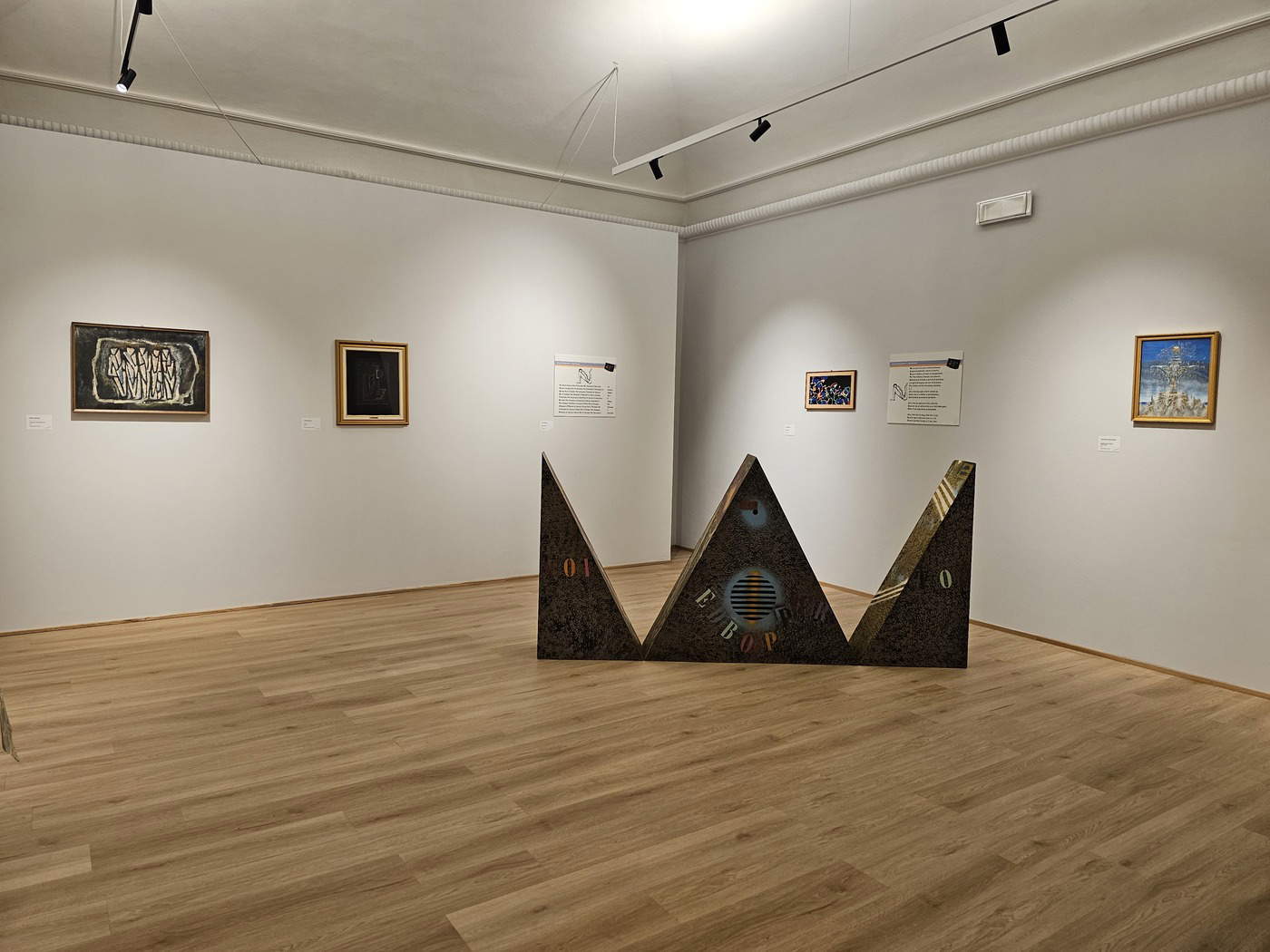From July 8, 2024 to January 6, 2025, the exhibition Da Baj a Ziveri . The Artists of the Sanguineti Collection, a project realized by the Artistic Management of Banca Patrimoni Sella & C. in collaboration with the Edoardo Sanguineti Inter-University Study Center and the Department of Humanities of the University of Turin. Through a selection of works, visitors can trace Edoardo Sanguineti ’s deep bonds of friendship and collaborations with some of the most celebrated artists contemporary to him, including: Enrico Baj, Albino Galvano, Emanuele Luzzati, Ugo Nespolo, Mario Persico, Carol Rama, up to Emilio Vedova and Guido Ziveri.
The artists exhibited went through the 1950s and 1960s of experimentation and the birth of the avant-garde and met and frequented Edoardo Sanguineti, a passionate interpreter of the same movement. The alphabetical sequence, reminiscent of theApocalyptic Alphabet, a poetic work by Sanguineti published in 1982, desired by the curators seemed a good solution to narrate the juxtaposition and multitude of expressive languages that make up the collection. The exhibition is a narrative composed of different codes: figurative art, heterogeneous materials and styles, words written by Sanguineti and sculptures. The event is part of the cultural activities of the Palazzone, which, after opening its outdoor exhibition spaces in 2022 on the occasion of the 250th anniversary of the founding of the Diocese of Biella, is now also opening to the public the indoor spaces on the ground floor of the historic building.
Edoardo Sanguineti was born in Genoa in 1930. In 1934 he moved with his parents to Turin. His meeting with Albino Galvano, his teacher at the Liceo d’Azeglio, revived his interests in the figurative arts and prompted him to frequent, from the Cinqunta years, the most important representatives of the avant-garde (Enrico Baj, Carol Rama and Mario Persico, among others), of whose works he became a critic and popularizer, as well as a passionate collector. In 1954 he married Luciana Garabello, by whom he had children Federico, Alessandro, Michele and Giulia. In 1956 he made his debut as a poet with Laborintus and discussed with Giovanni Getto his dissertation in Letters Interpretation of Malebolge, published in 1961. In the early 1960s he became Getto’s volunteer assistant, inaugurated a collaboration with Luciano Berio and was included by Alfredo Giuliani in the anthology I Novissimi. In 1963 he participated in the establishment of Gruppo 63 and obtained a free professorship at the University of Turin, from which he was forced to move to the chair in Salerno, where he remained for four years before returning to Genoa. Between the 1960s and 1980s he began an intense journalistic activity, devoting himself in parallel to politics as a city councilor in Genoa and a deputy to the Chamber of Deputies in the lists of independents. Sanguineti never tired of experimenting with expressive modes and communicative practices: in the following years he traveled around Europe and the world, continuing his literary career with a constant openness to the arts and media. He died in 2010 in Genoa.
 |
| Exhibition dedicated to the collections of Edoardo Sanguineti opens in Biella |
Warning: the translation into English of the original Italian article was created using automatic tools. We undertake to review all articles, but we do not guarantee the total absence of inaccuracies in the translation due to the program. You can find the original by clicking on the ITA button. If you find any mistake,please contact us.